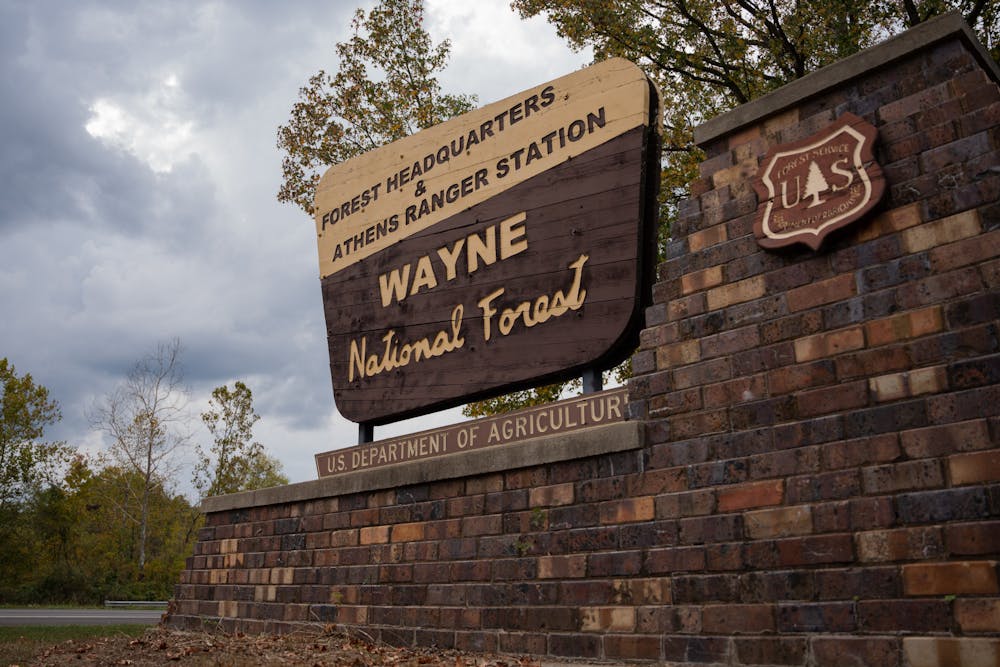Forest fires may typically raise safety concerns for the well-being of people, animals and plant life, but there are instances in which a controlled forest burn serves as a beneficial tool to manage ecosystems and rampant wildfires.
Wayne National Forest announced on Facebook on Oct. 14 that it would be conducting three prescribed fires in the Athens and Ironton Ranger Districts that would cover nearly 2,000 acres through Dec. 31.
The Athens district has two units, one which lies between Athens and Logan and the other to the east of Marietta. The Ironton district is located within Lawrence, Gallia and Scioto counties in southern Ohio.
According to the Facebook post, two of the fire sites are in the Ironton District, totaling around 1,220 acres, while the other site was held in the Athens District, covering nearly 700 acres.
One burn in the Ironton District near Perry Township took place Nov. 14, while the burn in the Athens District, located within the Baileys Trail System, took place the next day. It has not been announced whether the second Ironton site will schedule a prescribed burn by the end of the year.
Jared DeForest, professor and chair of environmental and plant biology at Ohio University, said the health of forests in Southeast Ohio depends on small-scale fires.
He said, that in Ohio, oaks are valuable tree species and prescribed burns help promote forest ecosystems.
“There's certain trees, let's say oaks and hickories, mostly oaks, that are basically adapted to fire,” he said. “From a seedling, for them to grow, they need a lot of sun, and the only way in a forest you're going to get a lot of sun is if a fire burns in here.”
Kelly Miller, public affairs specialist for Wayne National Forest, said one of the goals of the prescribed fires in both districts is to improve oak presence in the forest and create a younger, brushy forest.
“Prescribed fires are intended to be lower-intensity fires that burn at the surface level,” Miller wrote in an email. “Their flames should remain small, and they should reduce fuels … and shade-tolerant seedling trees, while mature trees and seedlings with well-developed roots survive.”
The fires are not just beneficial to the trees and soil, but for wildlife enhancement and diversity, too, Miller said.
“Oak-dominated ecosystems provide critical food and habitat to a variety of wildlife species and are important to our society,” according to the Facebook release.
Controlled burns also help to prevent and minimize future wildfires. Dry, dead leaves, trees and other debris can act as fuel for wildfires, which in Ohio tend to be almost entirely caused by human negligence, Miller said.
“In Ohio, almost all wildfires are caused by humans, such as unattended campfires, burning on private land or downed power lines,” Miller wrote in an email. “Due to the combination of post-suppression hardwood forest fuels and greater precipitation in Appalachian Ohio, fires are unlikely to occur by lightning strike.”
Some people may only read or notice media coverage of national or large fires; with the destruction from fires such as the Maui wildfire and the Canadian wildfires earlier in the year, the public perception of fire can be skewed.
Joseph Watson, an undecided freshman, said his knowledge of forest fires comes only from media coverage of larger fires.
“I hear about it on the news,” he said. “If something really big happens, then I'm aware of it.”
The public should avoid the area of the prescribed fires and drive slowly near the burn areas, the U.S. Forest Service wrote in the Facebook post.
“Closures are temporary and short in nature, usually lasting only a couple of days,” Miller wrote in an email. “Prescribed burns have a positive effect on recreation by decreasing the understory … and improving visibility along trail systems.”






